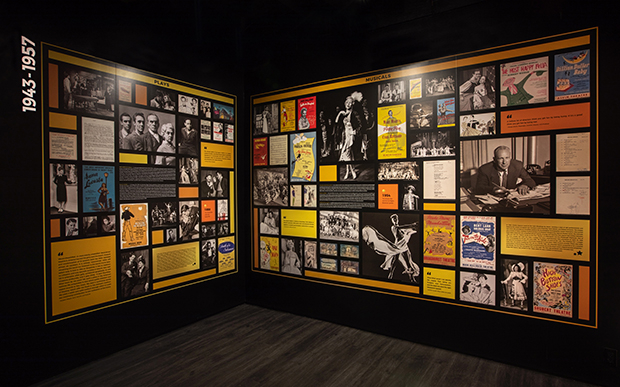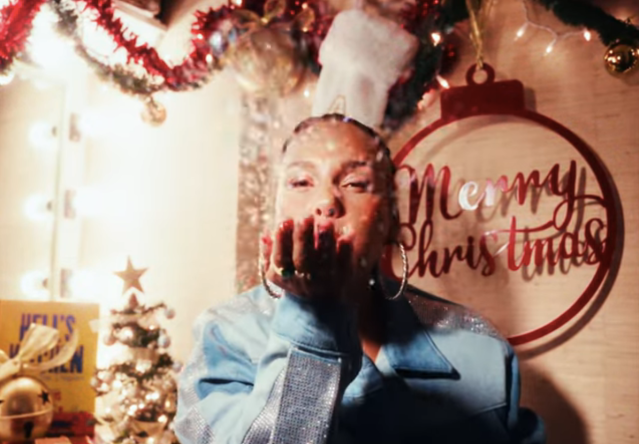Museum of Broadway Co-Curator Ben West Talks About How He Made Theater History Come to Life
The resident historian has curated a journey that takes visitors through 300 years of Broadway lore.
How do you narrow down 300 years of Broadway history? Luckily, Ben West had been training for the task.
When the founders of the new Museum of Broadway first approached West in 2019 about crafting the narrative journey of the museum, which traces Broadway's development from 1732 to the present day, West had already spent the last five years researching the evolution of the American musical at archives across the country. A musical theater artist and historian, West's book The American Musical comes out later this year.
Co-founders Julie Boardman and Diane Nicoletti had already selected the game-changing shows to which the museum would devote room-sized exhibits – the Ziegfeld Follies, The Wiz, and Rent among them. West's task was to write and design the "Timeline Walls" placed between the rooms, each wall capturing multiple decades of Broadway history through a mix of text, images, and quotations. The walls feature more than 750 assets, highlighting over 500 productions and more than 100 artists.
West spoke with TheaterMania about chronicling a vast and complex history, appealing to seasoned theatergoers and newcomers, and telling the story of roller skates on Broadway.

(© Kris Rogers)
This conversation has been condensed and edited for clarity.
There's an endless amount of Broadway history contained within the task that was handed to you, and I'm sure there is a ton that you couldn't include. How did you go about narrowing it down?
On the musical front, the spine of the museum is the evolution of the American musical. Within that, there are three underlying themes: the American musical as a reflection of American consciousness; repositioning African-American and female artists as a part of that evolution all along, though they are often segregated or overlooked in traditional histories; and the role of outside influences like vaudeville, minstrelsy, burlesque, and nightclubs, and how they were also part of the definition of Broadway in the early 20th century. So I didn't look at it in terms of narrowing the history down, so much as presenting a comprehensive history by following those underlying themes and trends that were happening throughout.
The timeline walls strike a balance of acknowledging offensive works of the past, or institutional barriers that artists faced, while still celebrating the accomplishments of the artists working under those conditions. For instance, there's a section on musicals of the 1920s featuring mostly Black casts that highlights those performers, while also acknowledging that white artists wrote the shows. Can you talk about striking that balance throughout the museum?
For me it stems from telling an accurate history. There are also, I would venture to say, overlooked white male artists who folks going through the museum won't know by name, or won't remember, who were integral to the theater's evolution.
But specifically on the African American and female front, it's a tricky period. Even with something like minstrelsy, there's this very interesting duality. Today, most individuals identify minstrelsy as blackface and grotesque, racist caricatures of African American life. That is the extent of our present-day knowledge of minstrelsy, to a large extent. Which is accurate, and cannot be negated.
However, it's very interesting as an art form as well, because it is the foundation of the American musicals that we are enjoying today. Over the 1800s minstrelsy is developing comedy, it is developing song, it is developing dance on American shores. It is also opening doors for Black artists. And the art form itself is developing.For example, when we get towards the turn of the 20th century, many of the songs that we're having in minstrel shows are not inherently racial songs. They are pop songs that one might still hear today.
For example, there's a wonderful song called "You Made Me Love You," by Jimmy Monaco and Joe McCarthy, which was used in a minstrel show in the 1910s. And that song has nothing to do with race. I mention this because this idea of complication and duality is something that persists throughout the turn of the 20th century.
There is a perception also that Black artists in the early 1900s had to wear blackface in order to appear onstage. And this is not true, as an absolute rule. Likewise there's a perception that Black artists, particularly in vaudeville, which was a major institution in the first three decades of the 20th century, were confined to a lower-class Black-specific circuit, the TOBA [Theatre Owners Booking Association]. In fact, there were a number of Black artists who were performing in big-time vaudeville on Broadway, alongside white performers. And many of these individuals were not performing in blackface.
It's just a very complicated period, so for me it's about attempting to present an accurate history with a lot of foundation and a lot of context, and using documented articles, documented interviews, documented photos to tell that story. And this is part of the reason why my research is focused on primary sources – newspaper articles, manuscripts, original documents, as opposed to reference books or documentaries.

(© Monique Carboni)
How did you ensure the timelines were accessible to visitors with little to no familiarity with Broadway, while also appealing to theater fans walking in with a lot more knowledge?
For me it was about digestible bites. I utilized a main copy block which spends two or three paragraphs on a specific theme or trend that's happening in that period. But then in addition to that there are milestone boxes, which is a short paragraph about a specific moment, and there are quotes, and there are lyrics.
All of the elements on the wall are meant to work together. So for example, there may be something addressed in a box that isn't addressed in the main text. One of those happens on the 1927 wall, which has a box about concert dance being integrated into the legitimate stage. People certainly know Agnes de Mille and the ballet in Oklahoma! But over the slightly more than a decade prior, there is a very active moment of concert dance to the musical stage. It's not that Oklahoma! just happened out of nowhere. Showboat didn't just happen, it's not the first book musical. It is an artistic progression.
Another fun example is that in the 1983 wall, there's a milestone box about roller skates. Because Starlight Express happens that year, but Starlight Express is not the first time that we saw roller skates on Broadway. So there's a box that goes back decades on the history of roller skates on Broadway.
Also on that wall, there's talk of a show that no one may have expected to be highlighted, which is Tango Argentino, talking about how surprisingly successful that dance piece became, and the trend that it was part of, because after that we have a number of Spanish and Latin dance-driven shows that are emerging on Broadway.
So there's a lot to be uncovered by people who already know a great deal about musical theater. And likewise, I'm hopeful that I have presented the history in such a way that it is digestible for those who are just being introduced to it.
What you said about Oklahoma! highlights that Broadway rarely if ever discovers any new form, it just brings that form to a new level of public consciousness. When something "new" hits Broadway, it has been building elsewhere.
Often there's a heavy interest in saying, "What is the first?" or "This is the first!" Like saying that Company or Cabaret were the first concept musical. But really, neither of them are. First of all, what is a "concept musical," it's a term that I would not support…
…I guess that's why there's a note in the Company room after it's referred to as a "concept musical" which adds, "Although, some say it's more accurate to call it a…"
…a "narrative revue." Yes, that one was me. [laughs] The only thing in the museum that I owned were the timeline walls, but I provided extensive feedback on a lot of historical elements, and so in some cases I did write suggestions that ended up being used. Because it's just more complicated than just saying "concept musical"! It's just a larger discussion.
Hopefully what people will see too is that what we think of as Broadway today, is not what Broadway was, actually. So vaudeville, for instance, was Broadway! Minstrelsy was literally on Broadway. Broadway is sprawling in terms of all the different forms that it has taken.

(© Monique Carboni)








